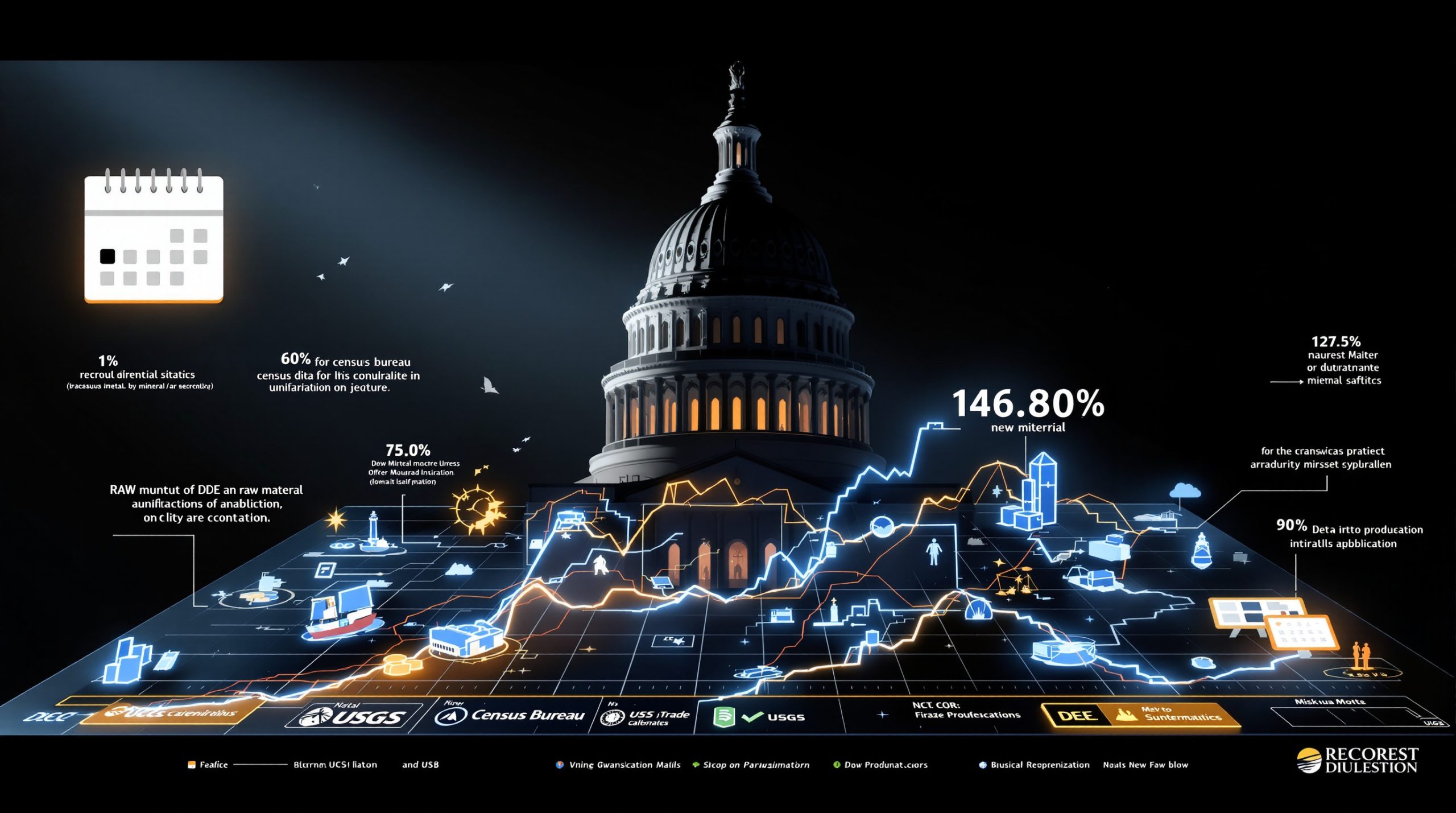What Is Driving the Current Gold Price Surge?
Gold has recently reached unprecedented all-time high analysis, exceeding $2,700 per ounce in late 2024. While mainstream media attributes this rally to retail investor enthusiasm, the data tells a different story. According to Bank of America's Private Bank Global Investment Committee, over 75% of financial advisors maintain less than 1% exposure to gold in their portfolios, indicating limited retail participation despite the price surge.
Behind the scenes, central banks worldwide have been accumulating gold reserves at the fastest pace in modern history. The World Gold Council reports central bank purchases totaled 1,037 tonnes in 2023 alone—the second-highest annual total on record. This institutional buying represents approximately 25% of annual gold demand and signals a fundamental shift in monetary strategy.
Central Bank Purchasing, Not Retail Investors
The data clearly shows that central banks, not retail investors, are driving gold's extraordinary price movement. While headlines suggest a gold rush among individual investors, the reality is that institutional buyers are strategically repositioning their reserves away from traditional currencies.
This pattern represents a fundamental shift in the global monetary reset landscape. Large financial institutions are acknowledging this transformation, with Morgan Stanley recently revising its traditional 60/40 portfolio allocation model to include a significant 20% gold position—a dramatic departure from conventional asset allocation wisdom.
Dollar Weaponization Concerns
Foreign nations are increasingly wary of the dollar's dual role as both a reserve currency and a geopolitical tool. When Russia was excluded from the SWIFT payment system, it demonstrated to other nations how quickly dollar-based assets could be frozen or restricted through sanctions and financial controls.
This weaponization of the dollar has accelerated the search for neutral reserve assets that exist outside any single government's control sphere. Gold as safe haven has emerged as the preferred alternative precisely because it cannot be digitally frozen, remotely controlled, or created from nothing through monetary policy decisions.
As nations band together to reduce dollar dependence—whether through BRICS alliance initiatives or bilateral agreements—they increasingly turn to gold as a foundation for trust in international settlements.
Monetary Policy Divergence
Perhaps most telling is gold market performance despite the Federal Reserve's aggressive interest rate hiking cycle since 2022. Traditionally, rising interest rates create a high opportunity cost for holding non-yielding assets like gold, which should suppress gold prices. Instead, we've witnessed the opposite effect—gold prices continued climbing despite monetary tightening.
This unusual price action demonstrates gold's decoupling from conventional monetary policy responses. The metal's steady rise despite higher rates signals that deeper structural shifts are underway in the global financial system, as market participants increasingly question the sustainability of the current monetary regime.
Why Are We Witnessing a Global Monetary Reset?
Throughout history, monetary systems have undergone periodic restructuring approximately every 30-50 years. The current fiat currency system, established following the collapse of Bretton Woods in 1971, represents the longest period without major monetary reorganization in modern history—suggesting we're overdue for significant changes.
Several converging factors indicate we're witnessing the early stages of a global monetary reset. The IMF reports global debt-to-GDP ratios have reached record levels, with developed economies averaging over 100%. The U.S. national debt exceeded $33 trillion in 2024, with interest payments consuming approximately 15% of federal revenues—a figure projected to grow substantially as interest rates normalize.
Historical Context of Monetary Resets
Monetary resets have occurred regularly throughout modern economic history. The classical Gold Standard (1879-1914) gave way to interwar period instability (1914-1944), followed by the Bretton Woods system (1944-1971) which pegged the dollar to gold while other currencies pegged to the dollar. When President Nixon suspended dollar convertibility to gold in 1971, it ushered in our current floating fiat currency era.
Each transition marked a significant realignment of global financial power and currency valuations. Those who understood the patterns and positioned accordingly preserved wealth through tumultuous periods, while those who failed to adapt suffered substantial losses.
The frequency of these resets isn't random—they occur when existing frameworks become unsustainable, typically when debt burdens grow beyond serviceable levels or when confidence in the monetary authority wanes.
Signs of an Accelerating Reset
Several indicators point to an accelerating monetary reset:
- Central bank gold purchases exceeding 1,000 tonnes annually, compared to net selling in previous decades
- Formation of alternative payment systems outside SWIFT, reducing dollar dependence
- Development of commodity-backed trade settlement mechanisms by BRICS nations
- Over 100 countries developing Central Bank Digital Currencies (CBDCs) according to Atlantic Council research
- Major financial institutions revising portfolio allocations to include significant gold positions
- Morgan Stanley's recent shift from traditional 60/40 portfolios to a new 60/20/20 model with 20% gold allocation
These movements represent tactical positioning by institutions and nations anticipating fundamental changes to the international monetary order—not speculative investment plays.
Unsustainable Debt Dynamics
The current monetary system faces unprecedented challenges from ballooning sovereign debt. As interest payments consume larger portions of national budgets, governments face increasing pressure to devalue their currencies to manage debt burdens.
When nations can no longer service debt through taxation or legitimate borrowing, they typically resort to currency devaluation—creating a self-reinforcing cycle that historically ends in significant monetary restructuring.
This pattern becomes particularly dangerous when foreign buyers reduce purchases of sovereign debt, forcing central banks to monetize government obligations through currency creation. Recent Treasury auctions have shown declining foreign participation, suggesting this process may already be underway.
How Do Historical Currency Collapses Compare to Today?
Examining historical currency collapses provides valuable insight into potential future scenarios. While circumstances differ across time and geography, the underlying mechanics of currency failure follow remarkably consistent patterns.
Case Study: Venezuela's Currency Revaluations
Venezuela has implemented multiple currency resets in recent decades as hyperinflation destroyed the bolivar's purchasing power. In 2021, authorities executed a million-to-one revaluation, eliminating six zeros from the currency—the third such redenomination since 2008.
Throughout these devaluations, gold maintained and dramatically increased its purchasing power in local currency terms. Venezuelan citizens who preserved wealth in gold could maintain living standards and purchase necessities despite economic collapse, while those holding only local currency saw savings evaporate.
This pattern demonstrates gold's critical role as a wealth preservation vehicle during monetary crises—not merely as an investment but as financial insurance against systemic failure.
Weimar Germany's Hyperinflation Pattern
Weimar Germany's hyperinflation in the early 1920s provides another instructive example. As the government printed currency to meet war reparation payments and domestic obligations, inflation accelerated until reaching a peak monthly rate of 29,500% in 1923.
Gold and silver prices skyrocketed in local currency terms, with gold ultimately reaching 87 trillion marks per ounce before currency stabilization. Those who preserved wealth in precious metals retained extraordinary purchasing power afterward, particularly for acquiring distressed assets and real estate from those who lost everything.
The wealth transfer that occurred benefited those who recognized early warning signs and positioned accordingly, while the middle class who trusted government assurances about currency stability were financially devastated.
Common Patterns Across Currency Collapses
Analysis of currency collapses in Argentina, Lebanon, Cyprus, and other nations reveals consistent patterns:
- Initial denial of structural problems by authorities and assurances of stability
- Accelerating inflation followed by hyperinflation as confidence breaks
- Implementation of capital controls restricting citizen access to savings
- Multiple currency revaluations or replacements as conditions deteriorate
- Preservation of purchasing power through precious metals and hard assets
- Significant wealth transfers from those unprepared to those properly positioned
While each crisis has unique characteristics, these fundamental patterns repeat across geography and time. Current monetary conditions—including record debt levels, negative real interest rates, and declining confidence in monetary authorities—share concerning similarities with pre-crisis periods in these historical examples.
What Role Are Central Banks Playing in the Reset?
Central banks have transitioned from net sellers of gold in the 1990s-2000s to aggressive buyers over the past decade. This fundamental shift represents a strategic hedge against currency instability and geopolitical uncertainty rather than a speculative investment.
Strategic Gold Accumulation
Central bank gold purchases totaled 1,037 tonnes in 2023 according to World Gold Council data—the second highest annual total on record. This trend continues a multi-year accumulation strategy by monetary authorities worldwide.
Notable examples include:
- China adding to gold reserves for 18 consecutive months through 2024
- Russia increasing gold reserves to over 2,300 tonnes, making it the fifth-largest holder globally
- Poland expanding gold holdings from 103 tonnes to over 420 tonnes between 2018-2024
- Turkey, India, and several Middle Eastern nations significantly increasing official gold positions
These purchases represent approximately 25% of annual gold demand, creating sustained buying pressure independent of investment sentiment or price considerations. This official sector accumulation indicates strategic positioning rather than tactical trading.
De-Dollarization Initiatives
BRICS nations and other economic blocs are actively developing alternatives to dollar-based trade settlement, including gold-backed mechanisms that reduce reliance on any single national currency. These initiatives aim to create a more balanced international monetary system less vulnerable to unilateral control.
The development of parallel payment systems outside SWIFT provides technical infrastructure for reduced dollar dependence in international commerce. When combined with gold-backed settlement mechanisms, these systems offer a viable alternative to the dollar-centric system established at Bretton Woods.
Unlike previous de-dollarization attempts, current initiatives benefit from technological advances that facilitate efficient cross-border payments without relying on legacy Western financial infrastructure.
Digital Currency Development
Central bank digital currencies (CBDCs) are being developed by over 100 countries according to Atlantic Council research. These digital instruments potentially offer governments new tools for implementing monetary policy, including negative interest rates, programmable money, and enhanced financial surveillance.
However, these digital instruments still face the same fundamental trust challenges as their fiat predecessors without commodity backing. Their development represents adaptation rather than solution to the core problems of the current monetary system.
The interaction between emerging CBDCs and physical gold reserves creates a fascinating dynamic in the evolving monetary landscape, with some nations potentially pursuing gold-backed digital currencies to enhance credibility.
How Does Gold Function During a Monetary Reset?
Gold performs unique functions during monetary transitions that distinguish it from conventional investments. Understanding these roles is essential for developing appropriate wealth preservation strategies.
Price vs. Value Distinction
It's crucial to distinguish between gold's price (its nominal cost in currency units) and its value (purchasing power and wealth preservation capabilities). During monetary resets, gold's price in failing currencies can rise exponentially while its intrinsic value remains relatively stable—reflecting currency devaluation rather than gold appreciation.
This distinction explains why seemingly "high" gold prices can still represent value when measured against declining currencies. For example, during the 1970s inflation, gold prices rose from $35 to over $800 per ounce—a nominal 2,200% increase that primarily reflected dollar devaluation rather than changing gold fundamentals.
Understanding this dynamic helps investors avoid the trap of viewing gold through a conventional investment lens focused on entry and exit prices rather than wealth preservation function.
Wealth Transfer Mechanism
Gold serves as a wealth transfer mechanism across monetary regimes, allowing holders to preserve purchasing power through currency collapses and position advantageously after monetary stabilization. This pattern has repeated consistently throughout monetary history.
During Venezuela's recent currency crisis, gold prices increased over 3,000% in bolivar terms, enabling holders to maintain purchasing power while currency-denominated savings evaporated. Similarly, post-hyperinflation Germany saw gold holders able to acquire distressed real estate and businesses at substantial discounts from those who lost everything.
This wealth transfer function explains why gold accumulation accelerates among informed participants as monetary conditions deteriorate—representing rational preparation rather than investment speculation.
Insurance Against Systemic Risk
Beyond investment considerations, gold functions as insurance against systemic financial risk that cannot be diversified away through conventional portfolio allocation. This explains why central banks maintain gold reserves despite decades of financial innovation.
During the Cyprus banking crisis, physical gold remained accessible while bank deposits were frozen and partially confiscated through bail-in provisions. This demonstrated gold's unique ability to remain outside the financial system during periods of systemic stress when counterparty risk becomes paramount.
Unlike financial instruments that depend on counterparty performance, physical gold eliminates this vulnerability, providing true protection against institutional failure that cannot be replicated through conventional risk management techniques.
What Are the Warning Signs of an Accelerating Reset?
Several warning indicators suggest the global monetary reset is accelerating beyond early-stage positioning into more advanced phases. Recognizing these signals helps investors distinguish between normal market volatility and fundamental regime change.
Declining Foreign Demand for Sovereign Debt
Reduced international appetite for government bonds forces central banks to monetize debt through currency creation, accelerating inflationary pressures and undermining currency stability. Federal Reserve data shows foreign holdings of U.S. Treasury securities have declined from peak levels, indicating this process may already be underway.
When foreign buyers reduce sovereign debt purchases, governments face difficult choices: reduce spending (politically challenging), increase interest rates to attract buyers (economically painful), or monetize debt through currency creation (inflationary). Historically, the third option prevails, creating the conditions for monetary reset.
Japan's yield curve control policies and European Central Bank's negative interest rate environment represent unprecedented central bank intervention, reflecting underlying stress in the sovereign debt markets fundamental to the current monetary system.
Increasing Velocity of Currency Debasement
The pace of currency devaluation tends to accelerate as monetary resets approach, with inflation transitioning to hyperinflation when public confidence in the currency collapses. Current inflation metrics may understate true currency debasement due to measurement methodologies and definitional changes.
Velocity of money (M2) has decreased significantly post-2020, indicating reduced confidence in currency circulation. This phenomenon typically precedes inflationary episodes as people lose faith in money's store of value function and begin cycling out of currency into hard assets.
The transition from low to high inflation environments historically occurs non-linearly, with confidence breaks triggering rapid acceleration rather than gradual progression. This explains why inflation can appear contained before suddenly becoming unmanageable once public psychology shifts.
Institutional Portfolio Restructuring
Major financial institutions are revising traditional portfolio allocation models to incorporate larger precious metals positions. Morgan Stanley's recent shift to a 60/20/20 model (60% equities, 20% fixed income, 20% gold) represents a significant departure from conventional wisdom and signals growing institutional concern about monetary stability.
These allocation changes reflect professional assessment of increasing monetary risks rather than reactionary investment positioning. When institutions with extensive research capabilities and long-term perspectives make such fundamental adjustments, it often precedes broader recognition of systemic issues.
University endowments and family offices typically maintain higher precious metals allocations than institutional averages, suggesting those with generational wealth preservation mandates recognize monetary risks more acutely than those with shorter time horizons.
How Can Investors Position for a Monetary Reset?
Developing appropriate strategies for monetary transitions requires balancing protection against current system breakdown with positioning for opportunities in whatever system emerges afterward. This dual objective distinguishes monetary reset preparation from conventional investment planning.
Physical Asset Allocation Strategies
Diversification into physical precious metals provides direct exposure to monetary reset protection without counterparty risk. Academic research suggests 5-10% precious metals allocation for risk management under normal conditions, with potentially higher allocations during periods of increasing monetary stress.
Physical gold storage costs typically range 0.5-1.5% annually depending on storage method and location—a reasonable insurance premium against systemic risk. Direct ownership eliminates counterparty risk present in gold ETFs and mining stocks that may be compromised during severe financial stress.
The optimal allocation depends on individual circumstances, time horizons, and risk tolerance, but historically even modest allocations have provided significant protection during monetary transitions. Gold's near-zero correlation with equities during crisis periods provides diversification benefits precisely when most needed.
Understanding the Opportunity Timeline
Monetary resets typically unfold over years rather than days, providing attentive investors with time to position accordingly. However, final currency collapses often accelerate rapidly once public confidence breaks, suggesting the importance of establishing positions before mainstream recognition.
Historical patterns indicate three distinct phases of monetary transitions:
- Early positioning by informed participants (central banks, institutional investors)
- Mainstream recognition and broader adoption as conditions deteriorate
- Crisis phase with capital controls, currency restrictions, and rapid devaluation
Each phase offers different risk-reward characteristics, with early positioning providing maximum protection but requiring patience, while later phases offer less protection but more certainty about transition timing.
Beyond Price Speculation
The primary function of gold during monetary resets is wealth preservation rather than speculative gain. While nominal returns can be substantial when measured in devaluing currencies, the true benefit comes from maintaining purchasing power and financial optionality through periods of systemic stress.
This preservation function explains why historical gold performance during monetary transitions looks spectacular in nominal terms (thousands of percent gains in failing currency units) but represents approximately constant purchasing power in real terms.
Understanding this distinction helps investors maintain appropriate expectations and avoid treating monetary insurance as speculative investment—two fundamentally different financial functions requiring different management approaches.
What Misconceptions Exist About Gold's Role?
Several persistent misconceptions about gold create confusion about its monetary function and appropriate role in portfolios. Addressing these misconceptions helps investors develop more effective wealth preservation strategies.
"Gold Is Too Expensive Now"
This perspective fails to distinguish between relative price and intrinsic value. Gold's rising price in fiat currency terms primarily reflects currency devaluation rather than changing gold fundamentals. When measured against broad money supply or global debt, gold remains significantly undervalued by historical standards.
Gold prices have increased approximately 20-fold since the 1971 end of the Bretton Woods system, but real inflation-adjusted prices remain below 1980 peaks when calculated using original CPI methodologies. This suggests current prices reflect monetary conditions rather than speculative excess.
Historical monetary resets suggest current prices remain far below potential valuations in a significant currency realignment. During previous transitions, gold has reached multiples of hundreds or thousands when measured against failing currencies—not from gold becoming more valuable but from currencies becoming less valuable.
"Central Banks Are Manipulating Gold Prices"
While price suppression mechanisms have been documented historically, they ultimately cannot overcome physical supply-demand fundamentals. The London Gold Pool (1961-1968) attempted to suppress gold prices but ultimately failed despite coordinated government intervention when physical demand overwhelmed paper manipulation capabilities.
Central bank manipulation typically aims to slow gold's rise rather than prevent it entirely, as completely suppressing gold prices would undermine confidence in the currency itself. Gold's monetary role as the ultimate form of payment means authorities cannot fully suppress its value without destroying the foundation of the financial system.
Recent ETF outflows coinciding with central bank purchases demonstrate different buyer motivations and highlight how physical demand from monetary authorities ultimately proves more influential than paper market mechanisms.
"Gold Is an Outdated Relic"
Despite technological advances, gold continues to fulfill its monetary functions due to physical properties that cannot be replicated digitally: non-counterfeitable, universally recognized, impossible to create from nothing, and immune to remote control or confiscation through digital means.
Digital currencies, including CBDCs, still require trust in issuing authorities, unlike gold's trustless monetary properties. While technology has created new asset classes, none replicate gold's unique combination of properties that have preserved wealth through thousands of years and countless monetary systems.
The continued accumulation of gold by central banks and sophisticated institutional investors demonstrates that those with the greatest financial resources and information continue to value gold's monetary properties despite the proliferation of modern alternatives.
FAQ: Common Questions About Monetary Resets
Investors frequently ask similar questions when confronting the possibility of significant monetary transitions. Addressing these common concerns provides practical guidance for developing appropriate wealth preservation strategies.
Will a monetary reset happen suddenly or gradually?
Historical patterns suggest monetary resets typically develop gradually but accelerate rapidly in their final phases. The transition often involves multiple stages rather than a single event, though certain aspects (like currency revaluations) can occur suddenly.
Early warning signs may persist for years before culminating in crisis, creating the illusion of stability that often leaves the public unprepared. The Venezuelan crisis unfolded over decades but included sudden devaluations and redenominations that caught many citizens unprepared despite long-term deterioration.
This graduated process explains why central banks and institutional investors begin positioning years before public recognition, creating the opportunity for attentive individuals to follow similar strategies.
How high could gold prices go during a reset?
During historical currency collapses, gold has increased by factors of thousands or even millions when measured in failing currencies. The nominal price becomes less relevant than gold's purchasing power relative to real assets like real estate, businesses, or commodities.
In Weimar Germany, gold reached 87 trillion marks per ounce before currency stabilization. In Venezuela, gold prices increased over 3,000% in bolivar terms during the recent currency crisis. These examples demonstrate how nominal prices can reach extraordinary levels during severe currency debasements.
Rather than focusing on specific price targets, investors should consider gold's purchasing power parity—what one ounce buys in real goods and services—which tends to remain relatively stable through monetary transitions while currency-denominated assets experience extreme volatility.
Should investors wait for gold prices to fall before buying?
Timing markets during monetary instability is exceptionally difficult. Historical patterns suggest that once a monetary reset begins accelerating, opportunities to acquire gold at lower prices become increasingly rare as institutional and central bank demand absorbs available supply.
Dollar-cost averaging provides a rational approach to building positions without attempting to time exact market entries. This strategy acknowledges the impossibility of identifying perfect entry points while ensuring steady accumulation of monetary insurance.
The opportunity cost of waiting for price declines that never materialize potentially exceeds the benefit of slightly lower entry prices, particularly when the primary objective is wealth preservation rather than speculative gain.
How does silver compare to gold during monetary resets?
Silver typically experiences even greater percentage gains than gold during monetary resets due to its industrial utility combined with monetary properties. However, silver also demonstrates higher volatility and requires more storage space per dollar of value.
In Weimar Germany, silver reached valuations equivalent to its historical purchasing power ratio to gold, suggesting both metals ultimately reflect their monetary roles during severe currency stress despite potentially different trajectories during the transition process.
A combined approach using both metals allows investors to benefit from gold's stability and silver's potential for greater percentage gains, with appropriate allocation depending on storage capabilities and risk tolerance.
Preparing for the Next Phase
The current monetary system is showing increasing signs of stress, with gold's price action serving as a key indicator of accelerating change rather than a speculative bubble. Central banks' strategic positioning, declining confidence in sovereign debt, and historical patterns all suggest we are witnessing the early stages of a significant monetary realignment.
Rather than viewing gold's rise as a temporary price phenomenon, investors should understand it as a signal of deeper structural shifts in the global financial architecture. Those who recognize these patterns can position accordingly, potentially preserving wealth through what history suggests could be a turbulent transition to a new monetary regime.
The global monetary reset currently underway represents not merely a market cycle but a fundamental restructuring of the international financial system. By understanding historical precedents and recognizing current warning signs, investors can develop strategies that not only protect wealth during the transition but potentially create generational opportunities on the other side.
Those interested in learning more about global monetary systems and geopolitical gold forecast can explore educational content about record-highs and inflation hedge, central bank policies, and precious metals as monetary assets.
Want to Be Alerted to the Next Major Gold Discovery?
Discovery Alert's proprietary Discovery IQ model provides instant notifications when significant ASX mineral discoveries are announced, helping you capitalise on potential opportunities before the broader market. Explore historic returns of major mineral discoveries at the Discovery Alert discoveries page and position yourself ahead of the market.




